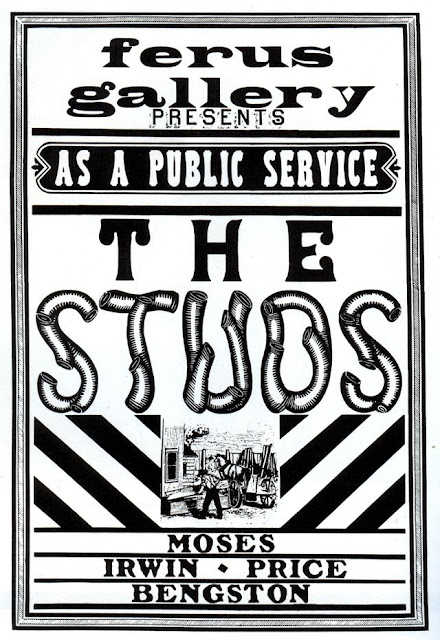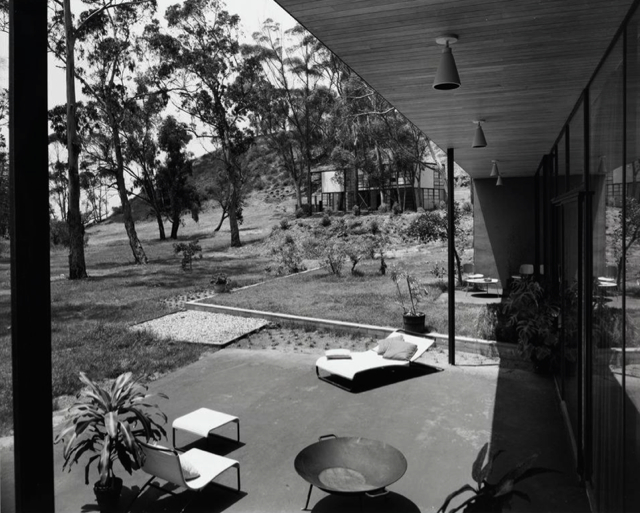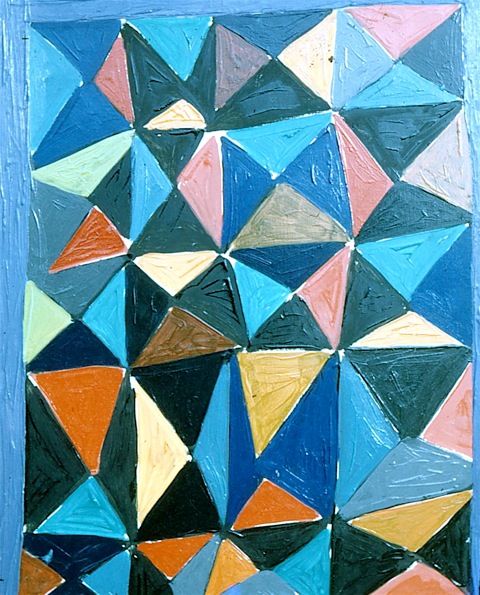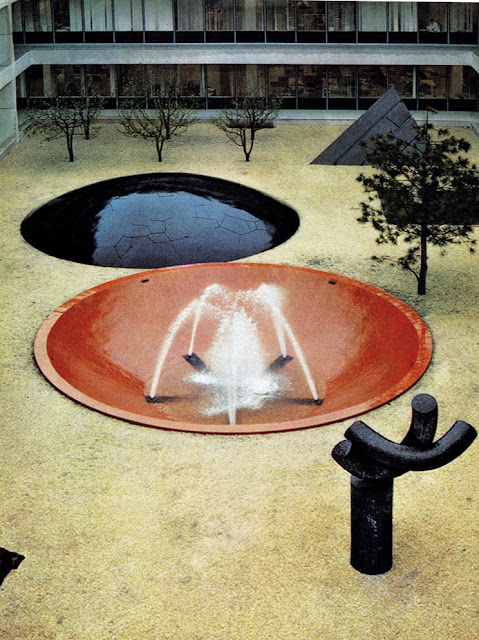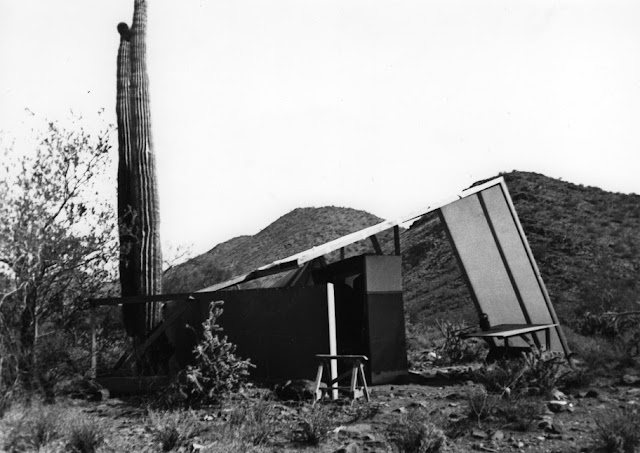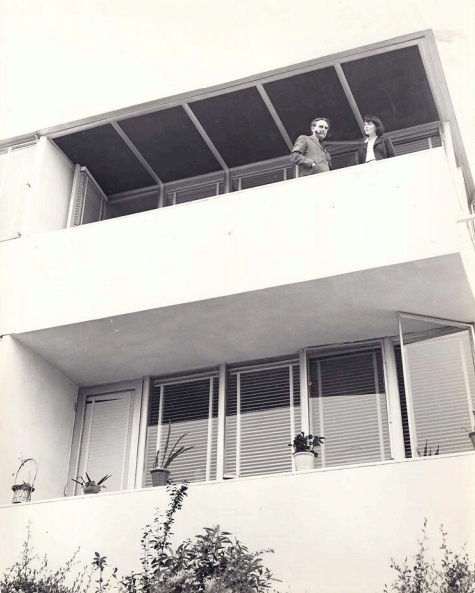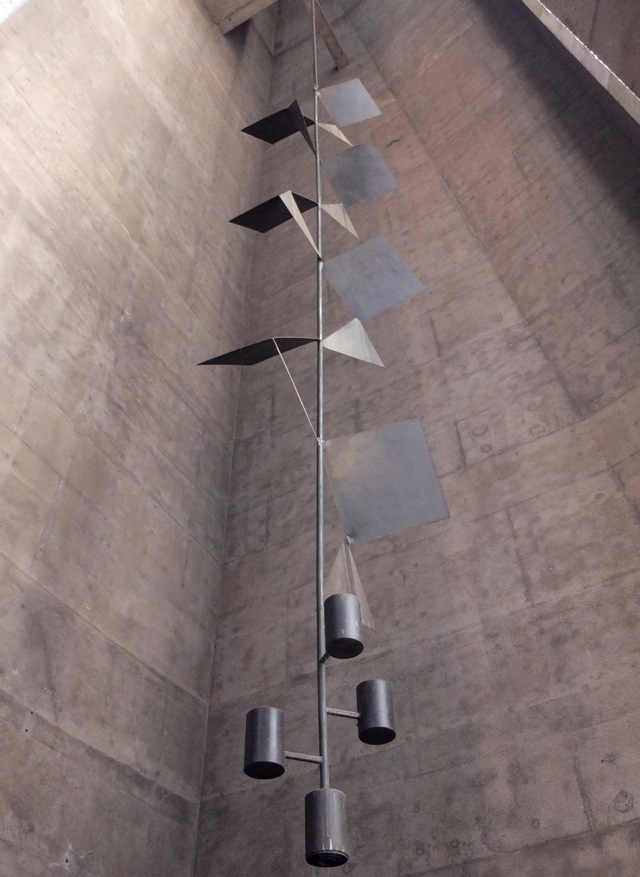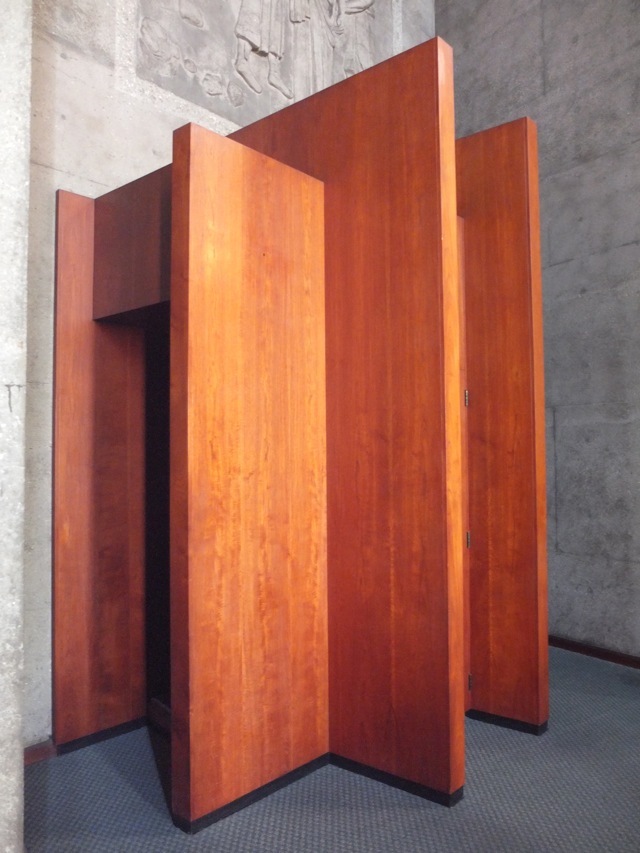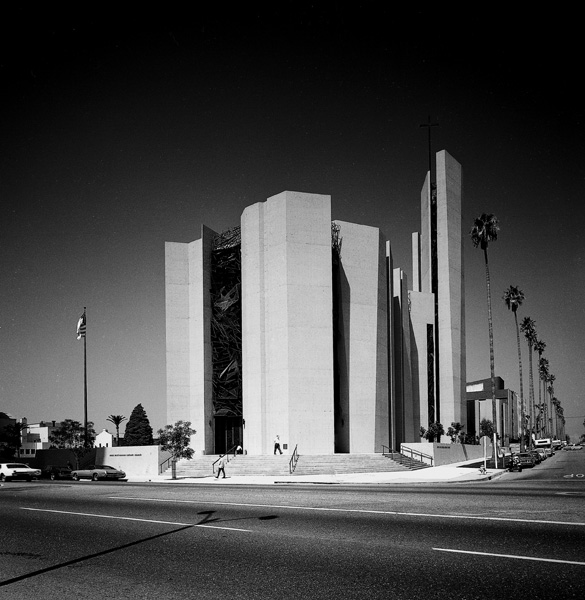Beverly-Carlton Hotel, Beverly Hills, CA, 1948-49
Alvin Lustig- Industrial Designer
Sam Reisbord- Architect
Eckbo, Royston & Williams- Landscape Architects
Photo: Julius Shulman, Architectural Forum
The Beverly-Carlton (now called the Avalon) in 2013 According to the Kor Group, who owns the hotel, in 1999 they took a "formerly non-descript property" and with Kelly Wearstler, "...the property was re-launched as the Avalon, a sophisticated 84-room mid-century modern boutique hotel."
That's an interesting way to put it.
Some of the tiles from the front of the original design have been reused as decoration in the remodeled hotel.
Presumably, the tiles were designed by Lustig. An article in Architectural Forum states the tile "..was made to the
architects' design, a repeat pattern in blue, yellow, and black on a white face."
Although Lustig wasn't an architect, I think it's safe to say he designed them.
The Avalon also uses a contemporary version of the tile design in various spots throughout the building.
Photo: Julius Shulman, Architectural Forum
Photo: Julius Shulman, Architectural Forum
The lobby, 1949
Photo: Julius Shulman, Architectural Forum
The lobby after Kelly Wearstler got to it. So this is what "mid-century" looks like these days? I think I like the mid-century version of mid-century better.
At least they have some VKG reproduction tables by the pool.
That's Marilyn Monroe at the Beverly-Carlton. She lived there during a few points in her life.
Marilyn Monroe at the Beverly-Carlton in 1951
The Beverly-Carlton still looks great as the Avalon. I know they're running a business and
not a museum but I do think they really blew it by not having those tiles on the front.
I can live with the glammed out furniture — it is Beverly Hills.







